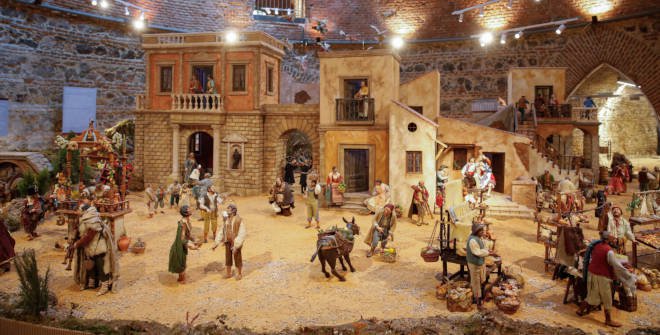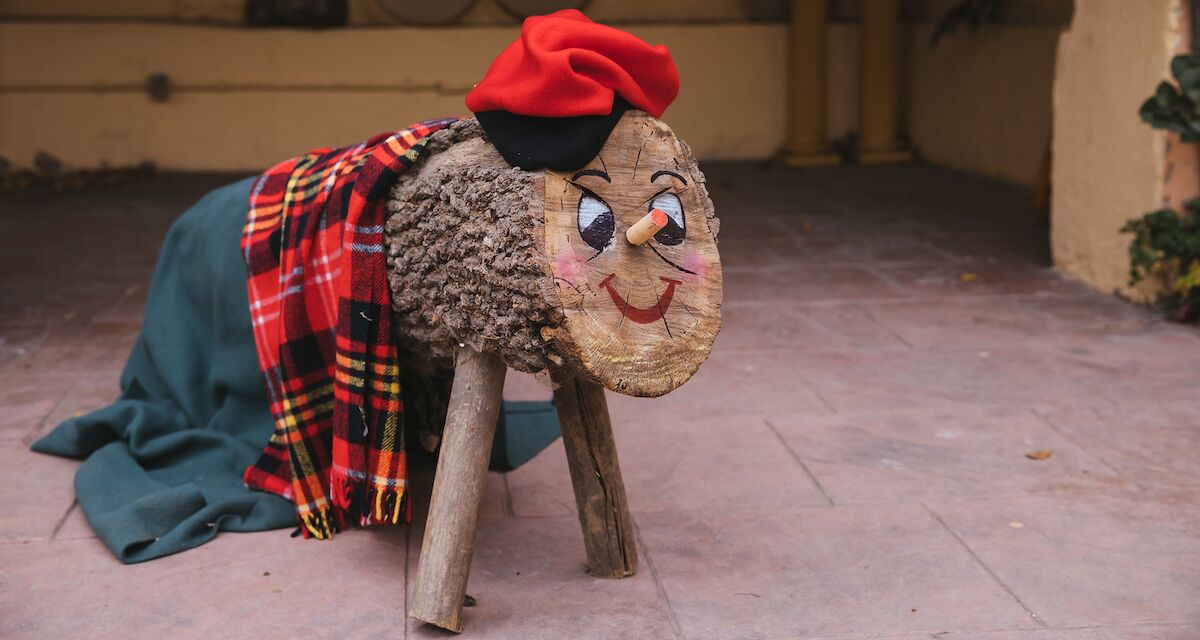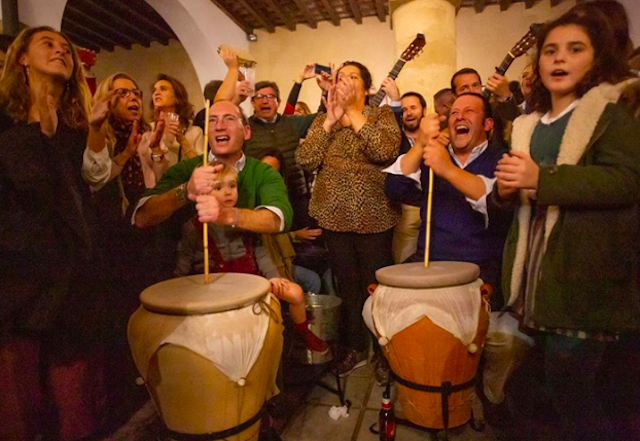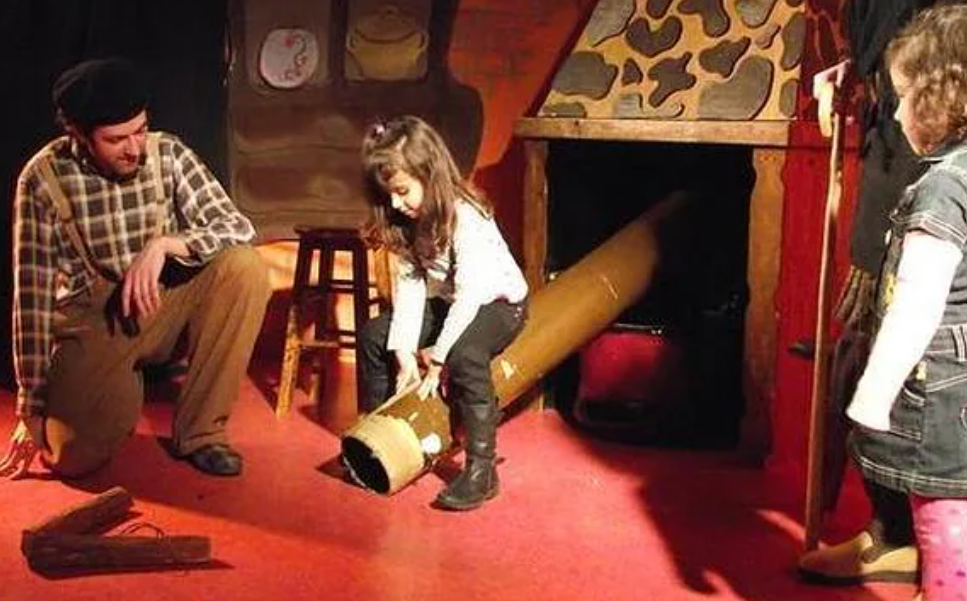Christmas in Spain is a time of celebration, family gatherings, festive feasts, and rich traditions that vary from region to region. The Spanish Christmas season is vibrant with unique customs that reflect the country's diverse cultural heritage. Here are some of the most notable Christmas traditions across different parts of Spain, including the Basque Country.
1. Nochebuena (Christmas Eve)
Nochebuena, celebrated on December 24th, is arguably the most important night of the Christmas season in Spain. Families gather for a sumptuous dinner that often includes seafood, roast lamb or pig, and a variety of traditional desserts such as turrón (nougat) and polvorones (almond cookies). Dinner is followed by the "Misa del Gallo" (Midnight Mass), where communities come together to celebrate the birth of Jesus.
2. El Belén (Nativity Scene)
The Nativity scene, or "Belen," is a staple in Spanish households during Christmas. These intricate displays can range from small, simple setups to large, elaborate ones depicting the entire village of Bethlehem. The most famous Nativity scene is in Madrid's Plaza Mayor, where artisans from all over the country showcase their creations.
3. Caga Tió (The Pooping Log) in Catalonia
In Catalonia, a unique tradition known as "Caga Tió" involves a log adorned with a face and a red hat. Children "feed" the log small treats in the days leading up to Christmas. On Christmas Eve, they beat the log with sticks while singing a special song, prompting it to "poop" out gifts and candies.
"feed" the log small treats in the days leading up to Christmas. On Christmas Eve, they beat the log with sticks while singing a special song, prompting it to "poop" out gifts and candies.
4. Día de los Santos Inocentes
December 28th marks the "Día de los Santos Inocentes," Spain's equivalent of April Fool’s Day. People play pranks on each other, and the media often participates with humorous fake news stories. The day commemorates the biblical account of King Herod's order to kill male infants in Bethlehem.
5. Nochevieja (New Year's Eve)
New Year's Eve, or "Nochevieja," is celebrated with a festive atmosphere. A longstanding tradition is to eat 12 grapes at the stroke of midnight—one grape for each chime of the clock—believed to bring good luck for each month of the coming year. In cities like Madrid, people gather at main squares, such as Puerta del Sol, to celebrate this occasion.
6. Cabalgata de los Reyes Magos (Three Kings Parade)
 - Copy 1.jpeg)
On January 5th, the eve of Epiphany, Spain hosts the "Cabalgata de los Reyes Magos," a grand parade celebrating the arrival of the Three Wise Men. Elaborate floats and performers traverse through streets, distributing sweets and small gifts to the eager children who line the parade route. This tradition is especially grand in cities like Madrid, Barcelona, and Seville.
7. Día de los Reyes (Epiphany)
January 6th, known as "Día de los Reyes," is the day when Spanish children wake up to find gifts left by the Three Wise Men as opposed to Santa Claus. Families also enjoy the "Roscón de Reyes," a ring-shaped sweet bread decorated with candied fruits. Hidden inside the Roscón are small figurines and a bean—the one who finds the figurine is "king" or "queen" for the day, while the one who finds the bean must buy the Roscón next year.
8. Andalusia’s Zambombas

In the Andalusian region, "Zambombas" are festive gatherings that occur throughout December, blending traditional Christmas carols with flamenco music. Named after the zambomba, a percussion instrument, these events bring communities together in joyous sing-alongs and dances, creating a lively and communal atmosphere.
9. Olentzero in the Basque Country
In the Basque Country, Christmas is marked by the appearance of Olentzero, a legendary character who brings gifts to children on Christmas Eve. Olentzero is depicted as a coal miner or charcoal burner, often dressed in traditional Basque attire. Parades and festivities are held in his honor, and children leave out shoes to be filled with presents. Another popular Basque tradition is "Eguberri," which encompasses various Christmas celebrations and gatherings within the region.
10. La Tronca (The Log) in Aragon
In the Aragon region, particularly in the province of Huesca, there is a tradition called "La Tronca" or "The Log." Similar to Catalonia's Caga Tió, La Tronca involves a hollowed-out log that children fill with candies, fruits, and small toys throughout the Advent season. On Christmas Eve, the log is set on fire, and as it burns, the children sing traditional songs asking for gifts. Afterward, the ashes from the log are collected and kept as a good luck charm for the New Year.
The magic of Spanish Christmas traditions is in their ability to unite communities, preserve cultural heritage, and spread joy. From the whimsical Caga Tió of Catalonia to the grand Cabalgata de los Reyes Magos, and from Andalusia's Zambombas to the Basque Country's Olentzero, each region of Spain offers its unique take on the festive season. These customs reflect the warmth, creativity, and rich history that make Christmas in Spain a truly special time.